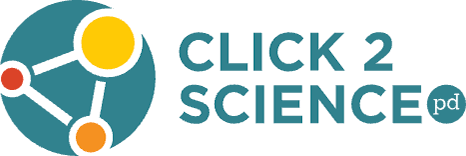
Training Staff
Training resources are designed for hands-on, interactive professional development experiences. These trainings engage staff with new ideas through experiences, discussions, and interaction. Each training focuses on a single skill for facilitating STEM learning. Well-trained staff can deliver high-quality OST programming that has a positive impact on youth. The skills and competencies that staff need to deliver high-quality programming can be developed through the interactions and discussions of a well-planned professional development program.
Training Tips
Tips for Using Meeting Guides
Meeting resources are brief, 15-30 minute, professional development experiences intended to introduce or reinforce STEM skills for staff. They can be part of a regularly scheduled staff meeting or conducted virtually.
Learn MoreTips for Using Training Guides
Training resources are designed for hands-on, interactive professional development experiences. These trainings engage staff with new ideas through experiences, discussions, and interaction.
Learn MoreTips for Coaching Staff
Coaching resources are designed to help coachees improve individual skills, thereby impacting their practice and the overall quality of the program.
Learn More
Click2Science PD Framework
The Click2Science Professional Development Framework is a recommended process for trainers and coaches to enhance the STEM facilitation skills of frontline staff and volunteers. It consists of three core STEM learning strategies and multiple STEM skills, providing a comprehensive view of the necessary development for learners.
Hover over an item to view the strategy or skill and click to navigate to that page.

Skill: Developing a STEM Identity
Let There Be Light Module
Participants will watch the “Let there be Light!” learning module to learn why STEM identities matter.
View GuideSkill: Supporting Documentation of STEM Learning
Applying Strategies for Documenting STEM
Participants will document their learning with three activities: “Sink or Float,” “Paper Airplanes,” and “Amphibian/Fish Comparison”. They will also complete a self-reflection and set goals for their practice.
View GuideSkill: Supporting Documentation of STEM Learning
Developing Your Best Strategies
Learn new strategies for documenting STEM learning.
View GuideSkill: Enabling Active STEM Learning
What About Challenges?
Participants will reflect on programmatic challenges in order to add more active learning opportunities to their program.
View GuideSkill: Enabling Active STEM Learning
Making STEM Meaningful
Participants will apply strategies for making STEM meaningful to their upcoming activity plans to learn to get youth actively engaged in STEM learning.
View GuideSkill: Enabling Active STEM Learning
Make it Active
Participants will review strategies to get youth actively doing STEM in order to add more active learning opportunities to their program.
View GuideSkill: Enabling Active STEM Learning
Developing Skills Needed for Active STEM Learning
Participants will reflect on their facilitation to learn to get youth actively engaged in STEM learning.
View GuideSkill: Modeling Science Practices
Digging Deeper
Participants will expand an upcoming lesson to learn to engage youth in conceptual STEM learning.
View GuideSkill: Modeling Science Practices
Developing and Expanding Youth Explanations
Participants will learn how to support youth to engage in science practices through an Exploring Soil Ecology activity.
View Guide